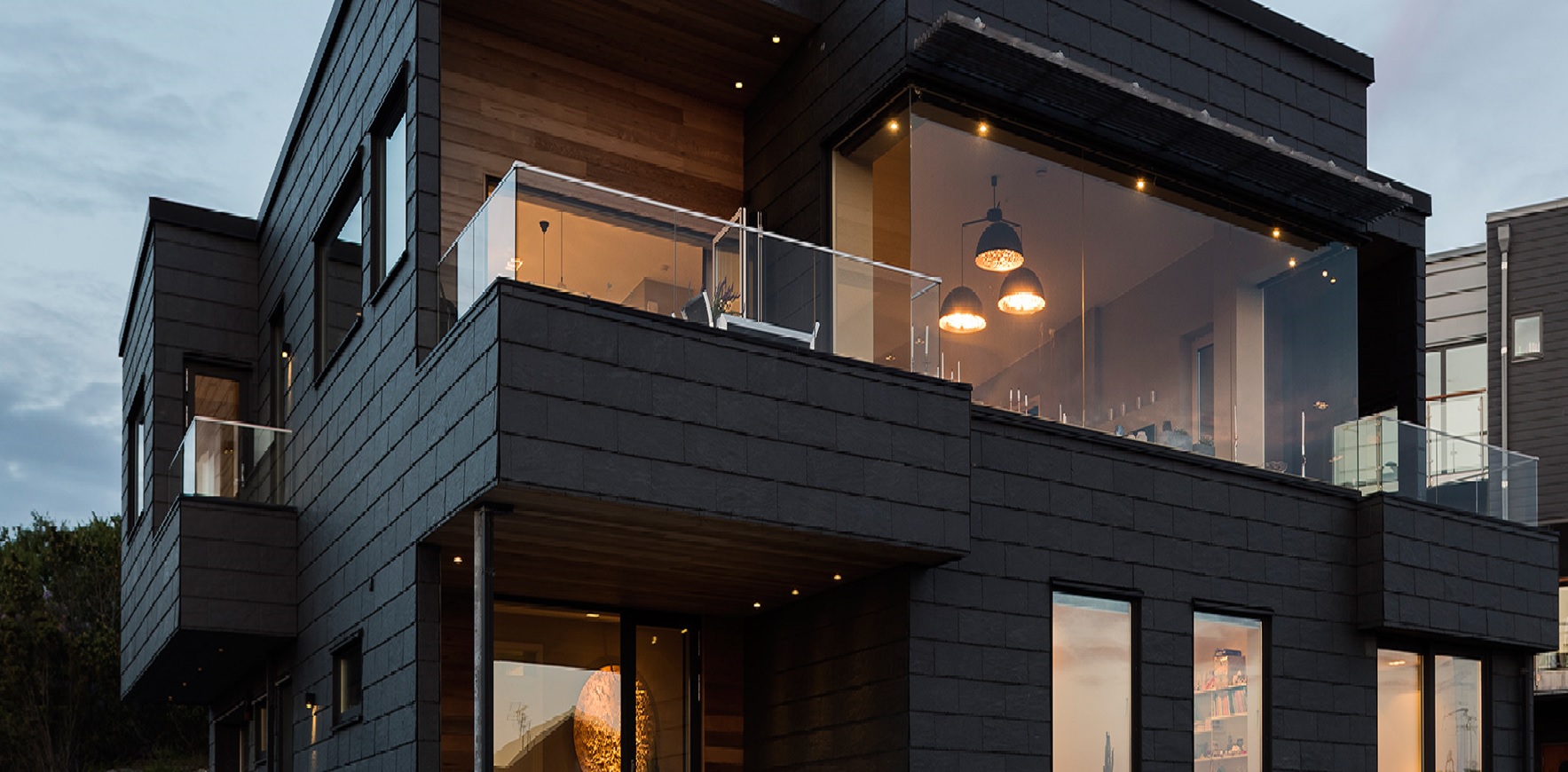Slate facade - the future of modern architecture

26may
Slate facade - the future of modern architecture
Shale roof has been around for hundreds of years. For the first time, slate tiles appeared on the roofs of medieval castles and churches. This magnificent natural stone has long been known as a durable material that can be adapted for use for a variety of environments and human needs.
Recently, this traditional roofing material breathed new life. Slate has become very popular in European countries and far beyond its borders, and every year it is gaining popularity in Ukraine, as a modern and attractive architectural trend. Fire-resistant, shock-resistant and wind-resistant, and also environmentally friendly material became especially popular among steady architectural tendencies.
Ventilated facades of slate are perfectly combined with component materials, such as aluminum, copper, stainless steel, titanium-zinc and other materials, whose service life exceeds more than 50 years, which is approximately comparable to the service life of slate.
Advantages of ventilated slate façade:
1. Slate - strong and durable
Slate roofs, on average, serve up to 100 years, and there are also separate historical buildings that are more than 200 years old and they are covered with slate, which is laid on the building from the date of its structure. Based on this, we can argue that natural slate is durable.
Slate, a natural stone, has a fire resistance level of NG, and is also tested in Europe with a wind speed of over 160 km. per hour, and we can conclude that there are not so many forces that can destroy it. Natural slate is a durable building material.
2. Slate - eco-friendly material
Europeans care about improving the global environmentally friendly environment. Natural slate in itself is one of the most environmentally friendly building materials on the market, it is very often used in the form of trays or cutting boards for food.
The production of slate tiles is very minimal and rational in relation to the environment. Basically, slate is removed from the ground, formed and delivered to the buyer. No chemicals are ever added to the stone. During the extraction process, less water is used than in the production of eco-friendly ceramic tiles, there are only CO2 emissions that occur during the transportation of the stone.
On top of that, the career development process itself is as environmentally friendly as possible. After the mining site is exhausted and finished, the overburden should be returned to the quarry, and the natural flora in the development area should be restored as best as possible and approximately to its natural state.
3. Slate - energy saving
One of the biggest advantages of using a vented slate façade system is the reduction of the thermal bridge. A thermal bridge is the transfer of heat into the building and back; facade cladding systems help maintain a constant internal temperature by significantly reducing heat loss, which reduces the demand for heating and cooling systems, which in turn saves money.
4. Slate - luxury material
Slate was first used as a building material in the days of medieval castles and churches. Since then, it has been regarded as a good tone in construction and high-quality shale material has gained great popularity. Due to its beautiful appearance, long service life and durability, natural slate often increases the market value of real estate.
Transfer this noble material to the canvas of any facade and you will have a modern work of art in your hands, which over the years will become more and more valuable.